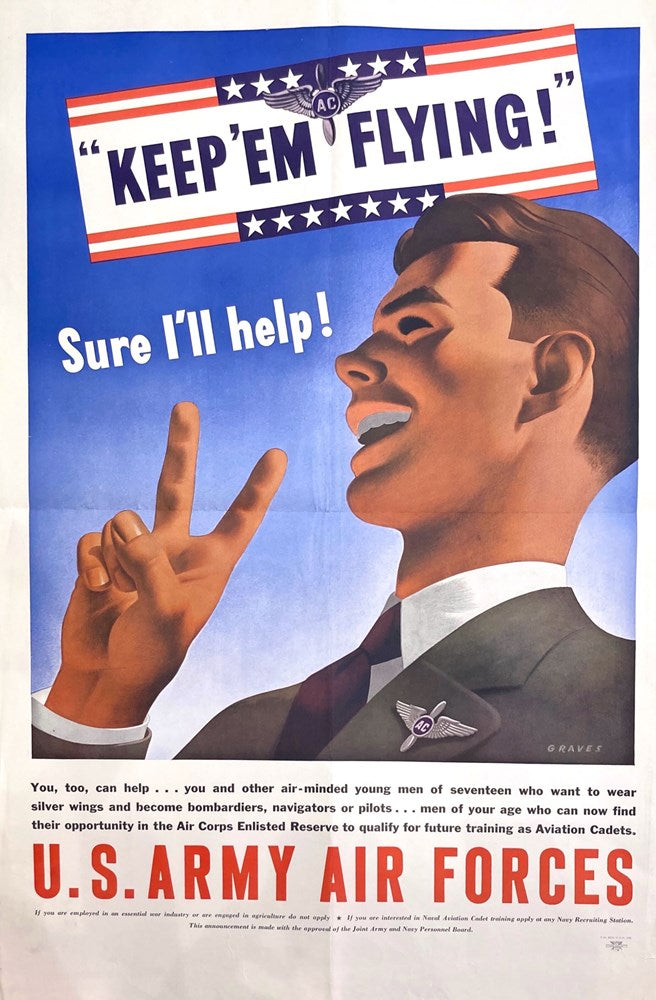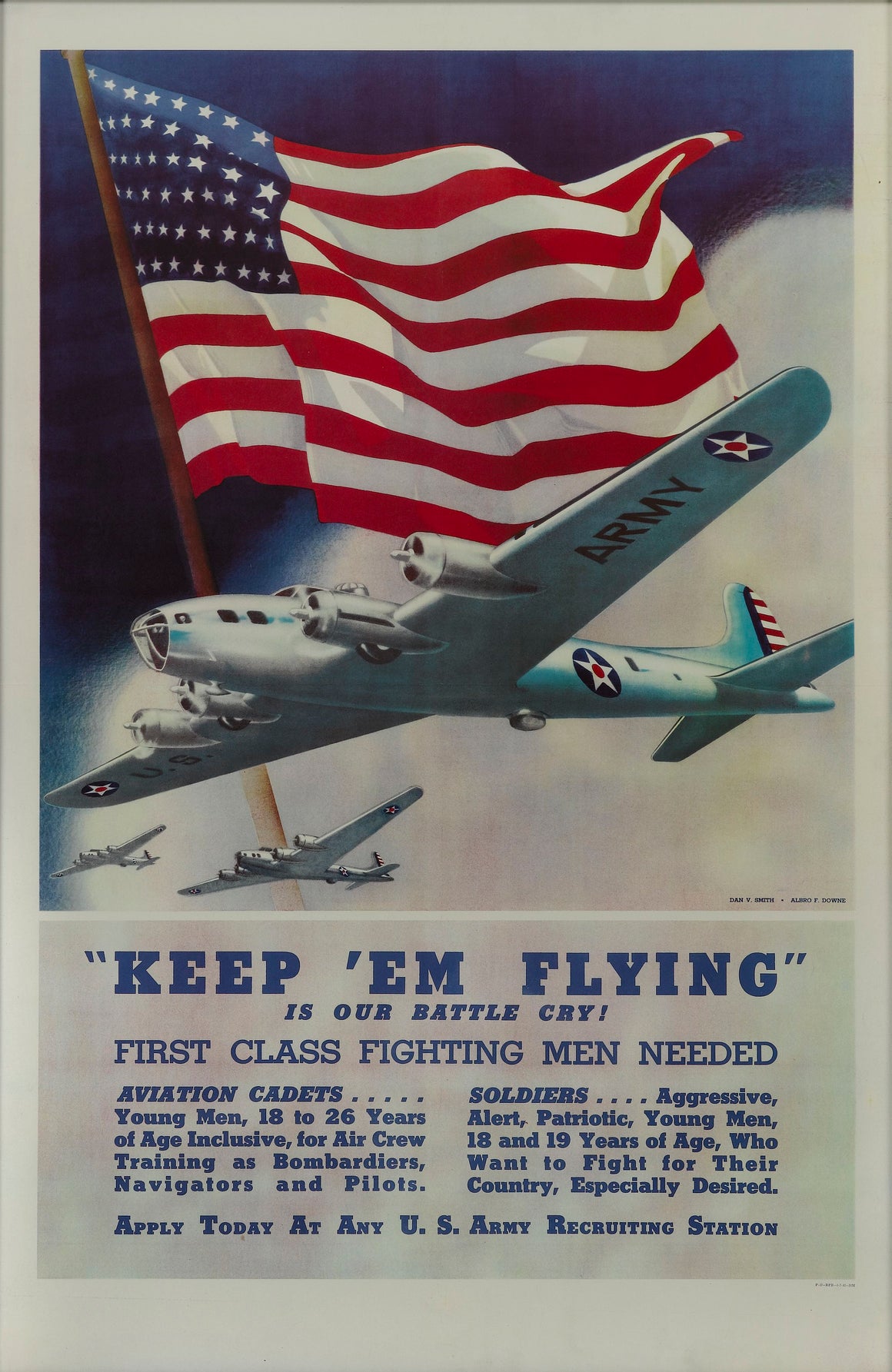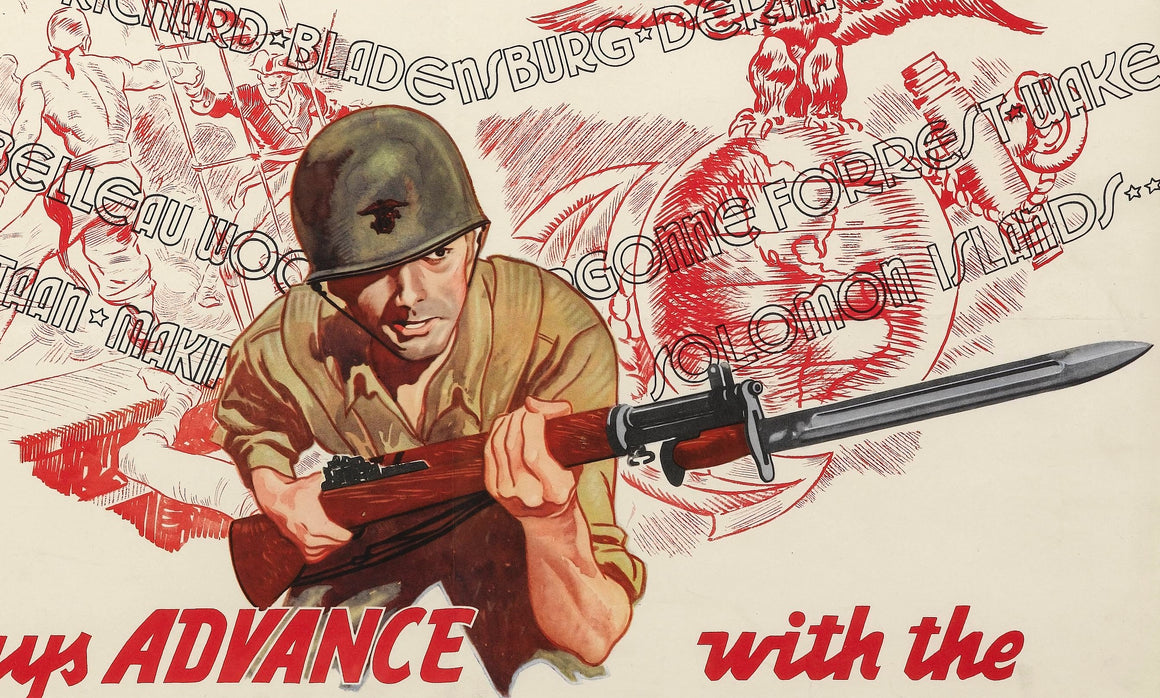"What did you do today...for Freedom?" Vintage WWII Recruitment Poster, 1943
$1,250.00
Presented is an original WWII Civilian Defense Corps poster, published in 1943. The black and white poster by Frederic Stanley shows a dead soldier lying face down, with a dented helmet planted a few inches from his head and a machine gun slung over his left shoulder. The strong words "What did you do today... for Freedom?" are printed just below the image. The poster asks onlookers: “Today, at the front, he died… Today, what did you do? Next time you see a list of dead and wounded, ask yourself: “What have I done today for freedom? What can I do tomorrow that will save the lives of men like this and help them win the war?” The poster concludes with text on how to join a Civilian Defense Corps. This poster was issued as part of the “Every Civilian a Fighter” campaign of 1943.
In the late summer of 1943, the U.S. government grew more and more concerned that Allied successes on the war’s battlefronts were fostering a sense of civilian complacency on the home front. To guard against this, the Government promoted messages that reminded civilian America of the horrific suffering and sacrifices that were being made by its Armed Forces overseas.
One of the most shocking of these propaganda campaigns was the “Every Civilian a Fighter” campaign, a national advertising effort that was the result of collaboration between the Offıce of Civilian Defense (OCD), the WAC, and the Magazine Publishers of America (MPA). Together they published full-page advertisements “in 444 home front magazines with aggregate circulation figures topping 90.5 million, equivalent to about 68 percent of the country’s 1940 population” (Kimble, 2016). Many of these advertisements were reproduced and printed on a larger scale as posters. The effort’s goal was ambitious: to dispel lethargy and rouse people into war activity and impress home front citizens with the meaning of total war and their stake in victory. True to its aim of using hard-hitting and realistic material, three of these ads featured drawings of dead or dying American GIs.
In this particular Office of Civilian Defense poster by Frederic Stanley, the gruesome depiction of a dead soldier on the beach is paired with a persuasive text block, shaming the American public into making a bigger, more substantial contribution. Yet this poster, however disturbing and accusatory, was meant not to only condemn the American public, but rather to motivate the public into more action. The poster is quick to point the way toward redeeming behavior- in this case, joining or starting a Civilian Service Corps in their town.
President Franklin Roosevelt set up the Office of Civilian Defense (OCD) in May of 1941 to coordinate state and federal measures to protect civilians in a war-related emergency. The OCD organized the United States Citizens Defense Corps to recruit and train volunteers to perform essential OCD tasks. Fiorello LaGuardia, the Mayor of New York City, chaired this federal agency in its early days, with First Lady Eleanor Roosevelt as his assistant. In less than a year, there were 8,459 local civilian defense councils across the United States, coordinating the services of about 5.4 million volunteers.
The tasks of Civilian Defense volunteers were varied, depending on their skill sets and available time. Thousands served as block leaders, transmitting information from the local defense council to their neighbors and making sure the information was understood. Doctors and nurses taught first aid classes. Retirees memorized the markings of enemy aircraft and watched the skies from roofs and bell towers. Women living near clubs for servicemembers organized games, dances, and community donations. Farmers and gardeners volunteered to teach people how to grow victory gardens. In addition, virtually every community had volunteer boards to administer government programs such as rationing, anti-inflation price ceilings, and the military draft. The OCD used promotional printed materials like posters, magazine advertisements, persuasive pamphlets, and store signs to encourage sign-ups and volunteering.
CONDITION:
Good condition overall. Light toning and surface scuffs, more noticeable in the margins. Horizontal crease at fold line, from past storage. "U.S. Government Printing Office: 1943- O=-513132" printed at bottom. Poster is sold unframed, as-is. Unframed Dimensions: 29" H x 21" W.
Share:
Related Items
Antiques
American-Made Goods
News & Updates
Sign up to get the latest on sales, new releases and more …
© 2024 The Great Republic. All Right Reserved.








